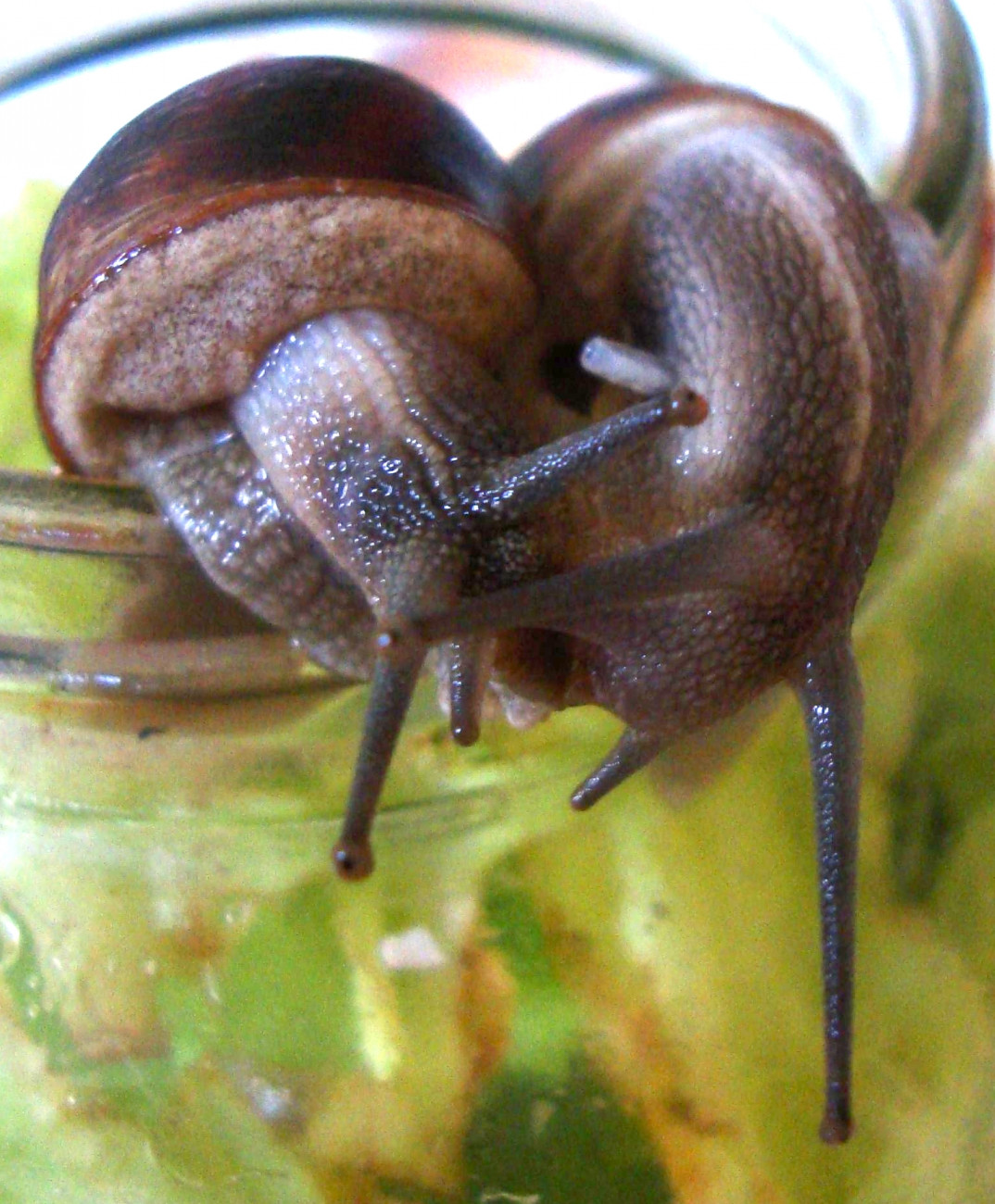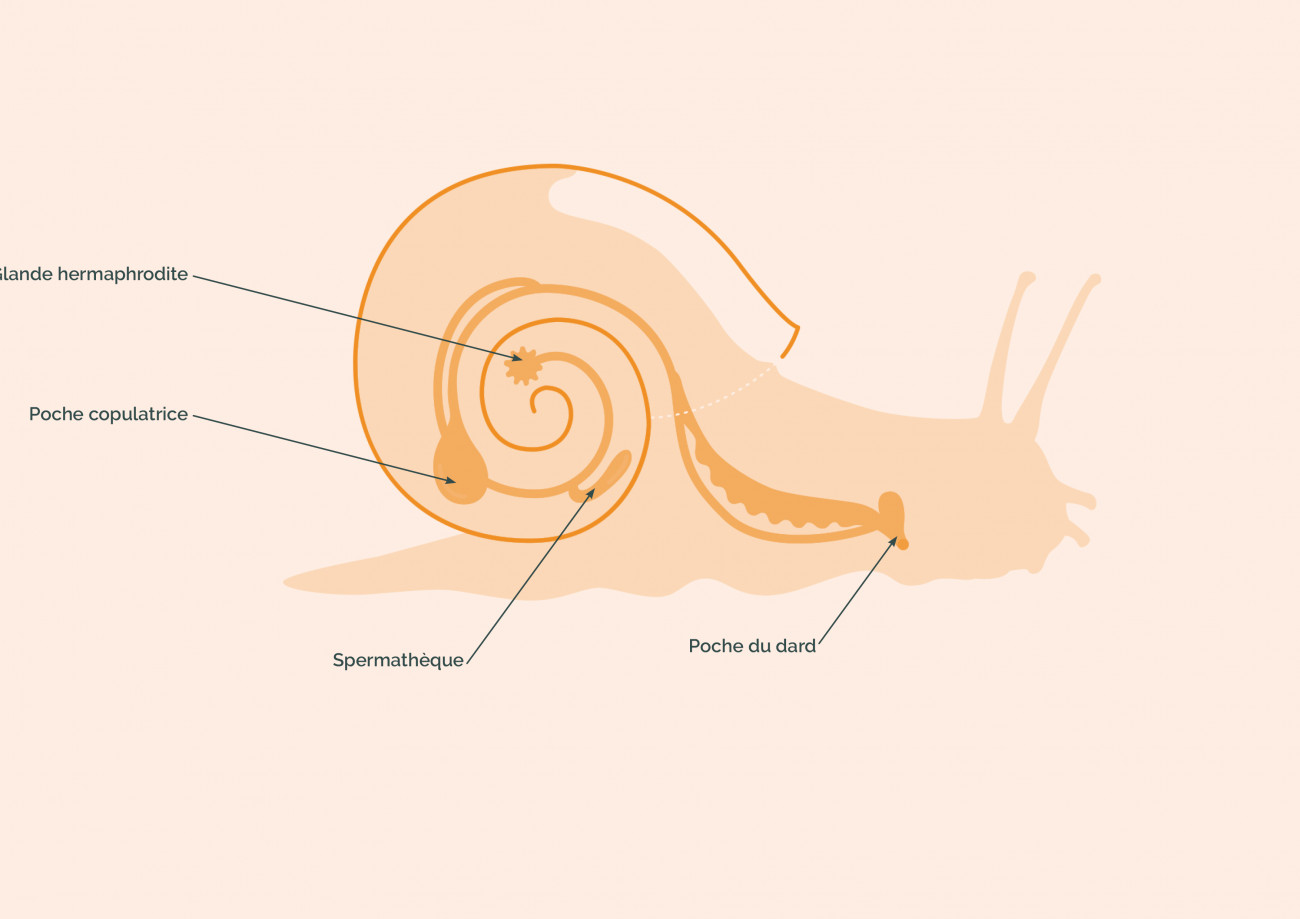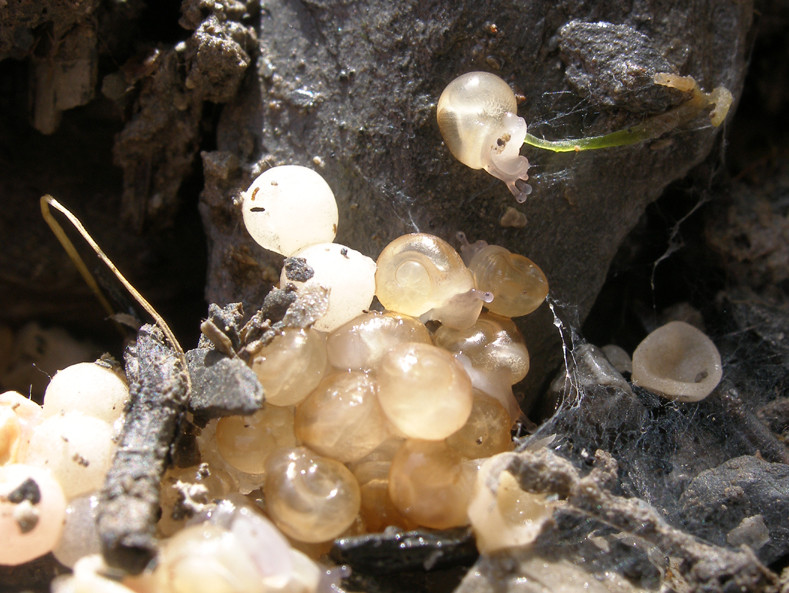The life cycle of snails
The majority of these little beasts are hermaphrodites: they are both male and female. But the meeting between two individuals and mating are still necessary for reproduction.
The preludes
For snails, spring is the mating season and when two individuals of the same species meet, they begin by embracing: these are the preludes. Next to the head, snails have a muscular pocket containing a stinger. During the preludes, this pocket opens and ejects the stinger which will go to plant itself between the head and the shell of the partner. The fact of being stung by this stinger will stimulate the snails which will be able to copulate then.
The matin
Their white penis comes out from under the right tentacle. The two partners exchange their spermatozoa in small bags, called spermatophores. The mating can last from 10 to 15 hours. Both snails then produce eggs that are fertilized by the sperm of the partner.
Slug reproduction is similar to that of the snail, with one difference: slugs do not have a love stinger. During mating, it is first the male organs that are active, then, after exchanging the sperm they store, the female organs "activate" and fertilization takes place with the stored male gametes.
Egg laying
15 to 20 days after mating, slugs and snails dig a hole in the ground (between the surface and about 10 cm deep) to lay their eggs. Each litter can contain up to 100 eggs for snails and 500 for slugs. The set of eggs is called a spat. The duration before the hatching varies according to the temperature (from three weeks when the temperatures are favorable, up to three months). Depending on the species, snails and slugs lay their eggs between once a month and once a year (you will find many pictures by following this link).
Development and adult life
As soon as it comes out of the egg, the snail already has its shell. During the development it will grow on the side of its opening. After a few months, the snails reach their adult size and the growth of the shell is slowed down. In captivity, a Burgundy snail can live between 5 and 10 years and in the wild, a Great Snail can live up to 3 years.




